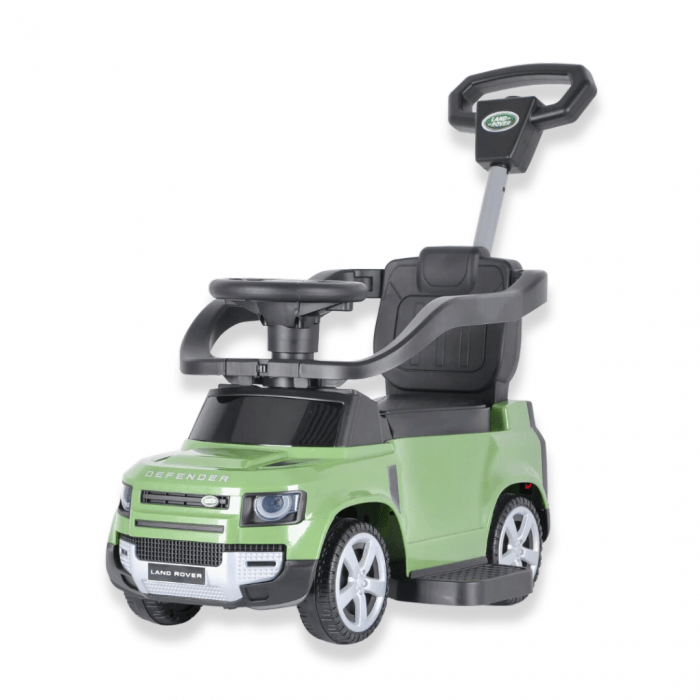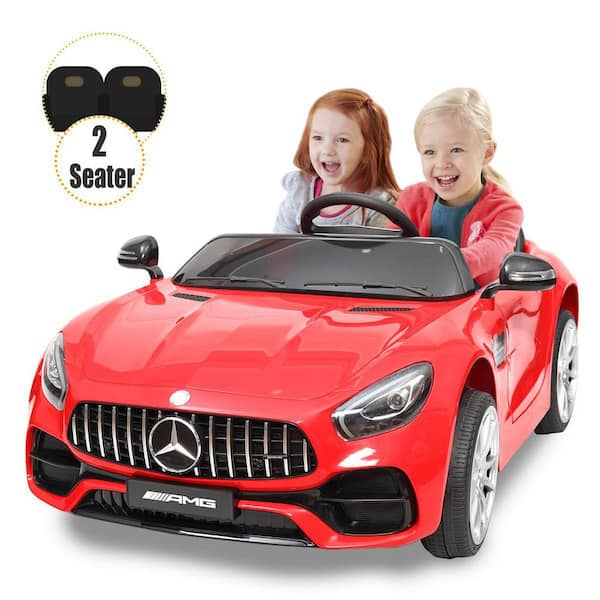Recommended Tips To Picking Remote Control Childrens Cars
Wiki Article
What Should I Know About Battery Life And Charging Time Of An Electric Ride On The Kids' Car?
It is essential to understand the battery life of your electric ride-on car for children and how long it takes to charge. This will ensure you can play for hours without interruption. Here's everything you must be aware of - Type of battery
The majority of electric vehicles for children are powered by rechargeable batteries. They can be either Lithium-ion or lead-acid. Lithium-ion batteries generally offer longer battery life as well as faster charging times than lead-acid batteries.
Battery Capacity
The time of operation for a ride-on car is determined by the battery capacity. It is measured in amp-hours or Watt-hours. Batteries with higher capacity provide longer duration between recharges.
Run Time -
This is the amount of time that an electric ride-on will run for following a single charge. It is affected by a variety of factors, including the battery's capacity, the strength of motor, terrain, or weight of a rider.
For electric ride on cars The typical runtime for electric ride on cars is between 30 and 2 hours from one battery charge. Some battery packs with higher capacity can provide longer durations.
Time for Charging -
The charging time is the length of time needed for batteries to be fully charged after it is depleted. Charge times vary based on the battery's capacity, charger specifications and the charging method.
The charging times for electric rides on cars are typically between 8 and 12 hours. Certain models can charge faster rates, particularly those with lithium-ion batteries.
To ensure the safety of your family and prolong battery life, it's important to charge the battery according to the instructions of the manufacturer. The battery's performance and life span may be affected by charging too much or undercharging.
Charge Methods -
Electric ride-on cars usually include a charger that plugs into a regular outlet for homes. Some models may offer fast-charging capabilities or include a smart charger that monitors the battery's state of charge and adjusts the charging speed in line with the state of charge.
Ensure that the charger connector and port are compatible with the charger provided with the ride-on vehicle in order to prevent damage to the battery or electrical system.
Batteries Additional -
Some electric rides offer the option to purchase extra batteries or spare batteries to play for longer periods of time. It is possible to replace worn-out batteries with ones that are fully charged, thus minimizing time between sessions.
By understanding the battery life and charging times of an electric ride-on kids' vehicle You can be sure that your kids will enjoy fun and uninterrupted playtime as they explore their surroundings. The battery's performance and longevity can be extended by regularly charging the batteries, and using proper charging methods. Read the recommended remote control childrens cars for site advice including childrens digger, pedal car, electric ride along car, pedal car, ride of car, lambo toy car, digger ride, electric ride on cars, electric ride on, childs electric ride on car and more. .

What Can Children's Car Models Be Used Both Indoors And Out?
Cars for children include specific features for various environments and usage scenarios that are indoors or out. The models are made differently: Indoor Use Cars
Size and weight - Cars that are designed for indoor use tend to be smaller and lighter which allows them to maneuver more easily within tight spaces like hallways, living rooms or playrooms. These cars are small and compact, allowing them to effortlessly navigate through narrow spaces or around corners.
Low Ground Coverage – Cars that are designed for indoor use have a very low ground cover to avoid them getting stuck or snagged against obstacles such as carpets or thresholds. This allows for smooth, free movement across indoor surfaces.
Smooth Wheels - The wheels on indoor automobiles are usually comprised of smooth substances such as plastic or rubber to offer traction and grip on smooth surfaces like hardwood flooring, laminate flooring or tiles. They are designed to minimize the sound and avoid scratching or scuffing surfaces in indoor environments.
Limited Speed – Indoor cars tend to be restricted in speed to permit safe and secure driving even in tight spaces. This prevents accidents and collisions with furniture, walls, or other obstacles commonly found indoors.
Outdoor Use Cars -
Durable Construction – Cars that are designed for outdoor use are constructed with robust materials. These include robust plastics and metals that are able to endure the harsh elements outdoors such as humidity, sunlight and temperature fluctuations. They are less prone to sustain tear and wear caused by exposure to outdoor environments.
Higher Ground Clearance - For outdoor use, cars have a higher clearances to traverse bumps, uneven terrain or obstacles encountered outdoors. They are able to traverse rough surfaces including pavement as well as gravel and grass.
Traction tires - Tires for outdoor vehicles are usually equipped with treads and patterns which provide better grip and traction on rough or uneven surfaces. This helps to maintain control and stability when driving over rough terrain.
Weather Resistance - For outdoor use, cars may feature components that are resistant to moisture or environmental damage including waterproof casings and sealed electronics. This permits the vehicle to stand up to mud, rain or puddles and still be able to perform.
Outdoor-use cars have higher maximum speed to accommodate vast spaces and distances. Children can have an adventurous and thrilling riding experience.
By considering these design features and features, parents can select a children's car model that is tailored to their particular requirements and surroundings, whether outdoor or indoors, and ensuring the safety, enjoyment and lasting experience for their child. Check out the best go here about kids cars for site examples including pedal car, electric car ride, car for toy, ride on car, 2 seater electric cars, remote control childrens electric cars, toy car for car, electric car ride, toy a car, 2 seater electric cars and more. .

What Is The Most Reliable Remote Control Car For Kids? Pros And Pros And
Remote control cars for kids, also called RC or remote-controlled vehicles, come in a wide range of styles, sizes and prices. They are designed to meet the needs of the needs of different budgets and tastes. This article will give you an overview of the different types sizes, styles and prices of children's remote controlled cars as well as their pros and cons.
Electric RC Cars – Remote-controlled vehicles powered by batteries that are suitable for use indoors and outdoors. There are a variety of designs of RC vehicles including trucks, buggies and sportscars.
Nitro RC Cars – Gas-powered remote controlled vehicles that have greater performance and speed However, more maintenance and expertise is required in order to operate. Electric RC cars are less bulky and cost less.
Scale Models are remote-controlled replicas that include trucks, cars and aircrafts. Scale models can be found in various scales ranging from 1-10 up to 1-24. The larger scales provide more detail and realism.
Sizes -
Remote-controlled cars for children are available in a variety of sizes. They range from tiny microsized replicas up to large-scale replicas. The size and weight of the car will affect its performance.
Micro-sized car are lightweight and compact. They're perfect for younger children and indoor use. Larger-scale models offer greater power and durability, making them ideal for outdoor racing and off-road driving.
Prices
Prices vary depending on the dimensions, features and build quality.
Small electric and nitro powered RRC cars are available in sizes that range between $20 and $100.
Models and high-end hobby RC cars cost from several hundred dollars to over 1000 dollars, based on the degree of detail.
Pros and Pros and
Pros -
Entertainment - Remote control children's cars provide hours of entertainment and excitement for both adults and children.
Running an R/C car can help children to develop spatial awareness, problem-solving and hand-eye cooperation.
Social Interaction: RC cars are ideal for social interactions with your family and friends.
Customization - Many RC cars can be customized by using accessories, aftermarket components, upgrades and other accessories that can enhance performance and appearance.
Cons
Costs - Remote controlled cars for kids, particularly those with high-end features and hobby-grade models are often very costly.
Learning Curve - Operating an RC car requires practice and ability as well as younger children could struggle initially.
Maintenance is necessary for RC car owners. They need to clean regularly, lubricate, and make repairs or replace parts.
Safety concerns - RC car safety could be affected due to electrical hazards, collisions, and other dangers if the cars are not controlled and used with caution by an adult.
The best remote control children vehicles are ones that provide an educational and fun experience to kids of all ages. When selecting the best one for your child, it is important to be aware of a range of aspects, including the size, cost features as well as security. Hobby-grade RC cars are better for kids who are more mature and enthusiastic and simpler models are ideal for children who are younger and less experienced children. Check out the most popular remote control childrens cars kidscars.co.uk news for website tips including ride ons, kiddies cars, lambo toy car, two seater electric cars, car on ride, kids electric cars, toy in car, 2 seater electric cars, digger ride, kids electric cars and more. .
